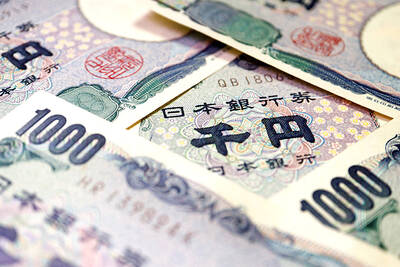Formosa Petrochemical Corp (
"We will send a team to Guatemala soon to look into the investment environment there," said a Formosa Petrochemical official who declined to be named.
Costs, transportation, government incentives such as subsidies or preferential loans and other conditions will be carefully evaluated by the company before making a final decision, the official said without providing a specific timeframe.
During a visit to Taiwan last month, Oscar Berger, the president of Guatemala, was given a tour of Formosa Petrochemical's Sixth Naphtha Cracker in Yunlin County, accompanied by President Chen Shui-bian (
The Guatemalan government later said that it hoped Formosa Petrochemical would invest US$7.2 billion in building an oil refinery with the capacity to produce 360,000 barrels of oil per day, along with a power station, a port and oil storage facilities, the Formosa official said.
Formosa Petrochemical produces approximately 700,000 barrels of oil per day in Taiwan.
Business risk is also one of the factors to take into account, he said.
For example, San Sun Hat & Cap Co (
Formosa Petrochemical emphasized that its evaluation of the Guatemalan projects was at a preliminary stage.
During a four-nation tour of Latin American allies, Vice President Annette Lu (
Shares of Formosa Petrochemical closed up 0.47 percent to NT$85.4 (US$2.61), outpacing the benchmark TAIEX, which lost 1.01 percent yesterday.
The private-run refiner saw its sales increase last month 17.17 percent from a year ago to NT$61.61 billion. Sales for the first six months of the year rose 14.54 percent from the same period last year to NT$293.85 billion.
Formosa Petrochemical, which is a unit of Formosa Plastics Group (台塑集團), commands about 30 percent of the domestic gasoline market. It exports about 65 percent of its gasoline for higher profits.

AI TALENT: No financial details were released about the deal, in which top Groq executives, including its CEO, would join Nvidia to help advance the technology Nvidia Corp has agreed to a licensing deal with artificial intelligence (AI) start-up Groq, furthering its investments in companies connected to the AI boom and gaining the right to add a new type of technology to its products. The world’s largest publicly traded company has paid for the right to use Groq’s technology and is to integrate its chip design into future products. Some of the start-up’s executives are leaving to join Nvidia to help with that effort, the companies said. Groq would continue as an independent company with a new chief executive, it said on Wednesday in a post on its Web

RESPONSE: The Japanese Ministry of Finance might have to intervene in the currency markets should the yen keep weakening toward the 160 level against the US dollar Japan’s chief currency official yesterday sent a warning on recent foreign exchange moves, after the yen weakened against the US dollar following Friday last week’s Bank of Japan (BOJ) decision. “We’re seeing one-directional, sudden moves especially after last week’s monetary policy meeting, so I’m deeply concerned,” Japanese Vice Finance Minister for International Affairs Atsushi Mimura told reporters. “We’d like to take appropriate responses against excessive moves.” The central bank on Friday raised its benchmark interest rate to the highest in 30 years, but Bank of Japan Governor Kazuo Ueda chose to keep his options open rather than bolster the yen,

Even as the US is embarked on a bitter rivalry with China over the deployment of artificial intelligence (AI), Chinese technology is quietly making inroads into the US market. Despite considerable geopolitical tensions, Chinese open-source AI models are winning over a growing number of programmers and companies in the US. These are different from the closed generative AI models that have become household names — ChatGPT-maker OpenAI or Google’s Gemini — whose inner workings are fiercely protected. In contrast, “open” models offered by many Chinese rivals, from Alibaba (阿里巴巴) to DeepSeek (深度求索), allow programmers to customize parts of the software to suit their

Global server shipments are expected to surge to 15 million units next year, from 4 million units this year, with artificial intelligence (AI) servers accounting for about 30 percent, driven by massive capital spending by major cloud service providers, the Market Intelligence and Consulting Institute (MIC) said on Thursday last week. Major cloud service providers — including Google’s parent company Alphabet Inc, Microsoft Corp, Amazon.com Inc and Meta Platforms Inc — are projected to budget US$450 million for capital expenditure next year, up from US$400 million this year, MIC ICT [information and communications technology] Industry Research Center director Edward Lin